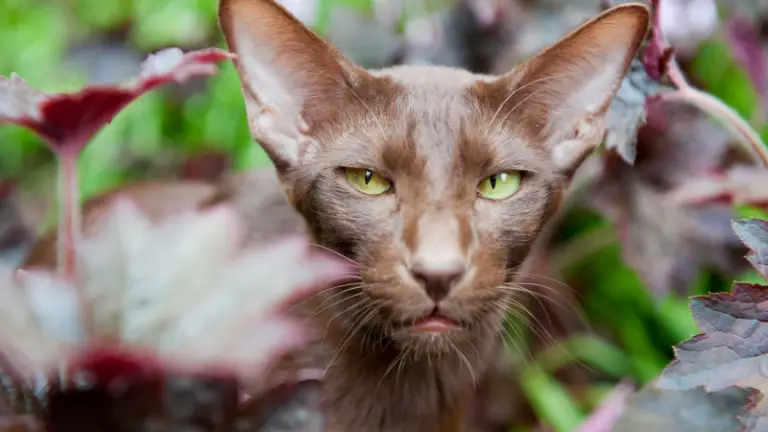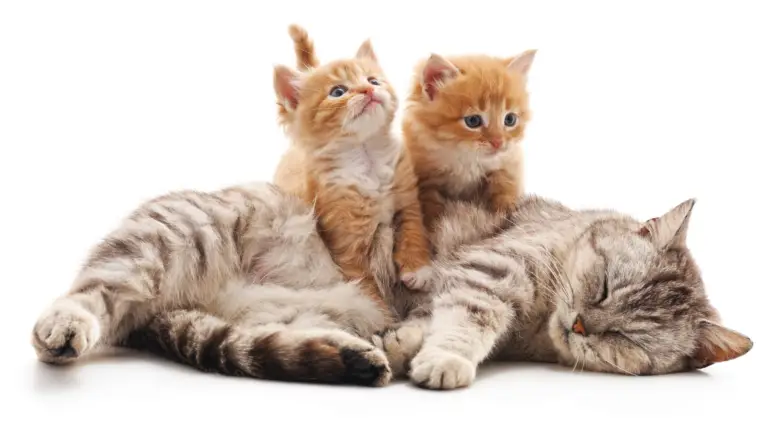MANX CAT PERSONALITY AND BREED (ALL YOU NEED TO KNOW)
Would you like to know more about the Manx cat personality? Despite being an out-of-the-ordinary cat, the Manx is one of the best-known feline breeds in the world.
They are animals known for their intelligence, proving excellent companions for those lucky enough to share their home with them. At a glance, the Manx cat is without a tail, has a massive build, is very friendly, and fits easily in various situations.
Let’s see the main characteristics of the Manx cat personality and breed.

WHAT IS THE MANX CAT GENERAL ASPECT AND SIZE?
The Manx is one of the most recognizable breeds ever; in fact, it is entirely free of a tail or has a small-sized tail. This characteristic is due to a mutation of the spine.
As in the case of the Cymric, there are three types: rumpy, entirely without a tail; stumpy, with a docked tail; And longy, with a standard tail.
Accepted colors are the same as those known for the British Shorthair, then the tabby and white variants are relatively common. If in the past the Manx was more slender, today it has a rounded nose and profile.
They are very malleable cats that adapt quickly to various situations: it is said that in the 1920s, there was a famous exemplary that accompanied a companion Bulldog at dog shows, shared the box with him, and seemed to enjoy the trip.
▷ The Manx has a rounder snout compared to other short-haired cats.
CHARACTERISTICS OF THE MANX CAT
| Characteristic | Description | Notes |
|---|---|---|
| In summary | Affectionate, rather massive cat. Limited availability, and small litters | Despite the common opinion, there isn’t only the severed tail variant |
| Personality | Sociable, he knows how to adapt well to the house | |
| Appearance | Unmistakable, from the square profile to the body similar to that of the rabbit | The front paws are shorter than the rear one |
| In the house | He is a faithful companion but does not mind venturing outdoors | |
| Behavior | Tolerant, he gets along well with people and also gets along well with dogs | |
| Grooming | The care of the coat is simple but must be combed and brushed regularly | |
| Most common health problems | Puppies can suffer from spina bifida. Possible paw problems and constipation | |
| Size | Medium, between 3.5 and 5.5 kg. | |
| Ears | Of medium size, slightly rounded | |
| Eyes | Large, round, and bright | |
| Head | Broad and round; short nose, chin well developed and prominent cheeks | |
| Paws | The front ones are short and distant, those hindquarters longer and more muscular. | |
| Coat | Double, soft, and shiny with short and dense undercoat | |
| Allowed colors | Smoke, chinchilla, silver shaded and monochrome (red, black, white, cream, blue, turtle scale) |
The Manx cat has a square shape. This is because the length of the legs must be similar to that of the back; that’s why the profile appears squared.
▷ Despite the absence of the tail, the Manx has no equilibrium issues.
The color of the eyes varies in base to the mantle, while the cat has round and proportionate feet to the rest of the body.
The hind legs are longer than the front one, while the low back gives the typical rounded profile and determines the cat’s pace, similar to the rabbit hops.
▷ In Manx cats, the responsible gene for the absence of the tail is dominant; in the Japanese Bobtail, it is recessive.
WHAT IS THE HISTORY OF THE MANX CAT?
The origins of the Manx are shrouded in mystery. However, with certainty, we only know that this cat comes from the Isle of Man, located off the west coast of England.
It is hypothesized that the ancestors are descended from cats produced on the island after the sinking of a Spanish galleon, following the bitter naval battle of 1588 in which the English fleet repulsed the Invincible Army.
Most likely, the characteristic docked tail appeared in the native feline population due to natural hybridization. However, the breed has a long history and is found already in the first feline shows of the late nineteenth century.
Currently, they are admitted to exhibitions only the specimens without a tail.
WHAT IS THE HISTORY OF THE MANX CAT?
Manx is native to the Isle of Man, in the Irish Sea, from which it takes its first name.
In addition to the peculiarity mentioned above, the cat presents another unique characteristic: the hind legs are longer than the front ones, which gives it a hopping gait, very different from that of other cats and more like that of the rabbit, the hare.
The Manx breed probably originated in the 18th century, and the selection was made possible by the natural isolation of the area where the breed developed. The debut
del Manx at an exhibition dates back to 1900 in Great Britain, but this strange cat was unsuccessful.
But, in 1901, the first club dedicated to the Manx was born. In 1930, however, he landed in the United States and received much appreciation; the breeders were immediately attracted by the natural mutation and decided to preserve and further develop this breed.
A long series of selective programs gave rise to two well-defined varieties: the American one, characterized by a rather stocky body, and the English one, which presents a more tapered morphology.
In addition to the short-haired variety, there is one with semi-long hair, better known as Cymric.
FELINE LEGENDS
According to an ancient legend, the Manx originally had a tail like all other cats, but arriving late on Noah’s Ark, he put his tail back on it, cut off by the doors that were closing.
Another legend has it, however, that it was the dog who deprived the Manx of its tail during a fight on Noah’s Ark and that the cat, ashamed of the mutilation suffered, dived and then swum on the Isle of Man, where he would later decide to settle.
MANX CAT PERSONALITY
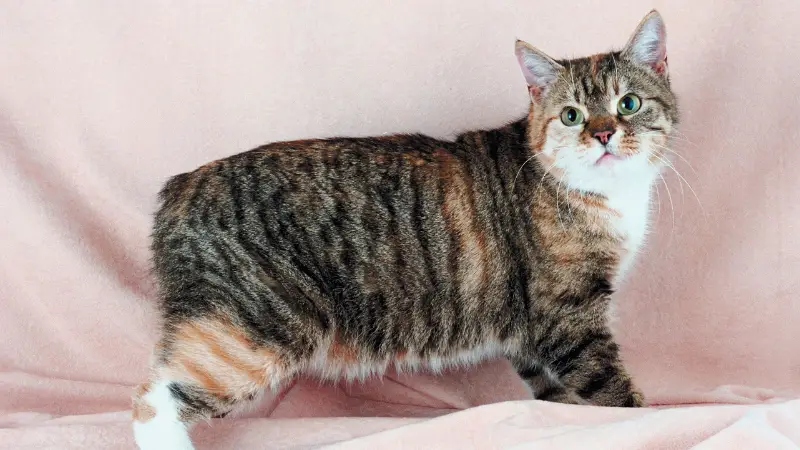
Intelligent and lively, for attitude and nature, the Manx is more like a dog, as evidenced by the attachment toward the owners, the habit of burying their toys, and fun to bring back to master the stick thrown.
In past epochs, the Manx has been an irreplaceable presence on farms for his strong predatory instinct. But on the other hand, the Manx is affectionate and cheerful with the whole family; he also loves playing as an adult. Moreover, he is not shy with strangers but a bit hostile to those he doesn’t like.
AN ADVICE
If you notice that your Manx has an odd gait, is a bit clumsy, almost hopping, don’t worry because it is a peculiarity of this breed.
He is fine in cold climates but prefers the warmth of the house to the walks in the snow.
HOW TO CARE FOR AND FEED THE MANX CAT
The grooming of the coat must be done regularly to keep clean his double hair. First, comb it to the root of the hair, taking care not to be too energetic because it is more delicate than other breeds and might experience pain while brushing it.
Striving for a balanced diet is the only recommendation regarding the diet. It is helpful to divide the daily portions into a quarter of wet food and three-quarters of dry, always accompanied by fresh water.
Remember: While resisting well to colder temperatures, the Manx prefers to stay indoors.
AN ADVICE
Never mate consanguineous Manx: kittens can be born with severe malformations such as spina bifida, which is lethal in most cases.
FREQUENTLY ASKED QUESTIONS
What is the price of the Manx cat?
The Manx cat can be expensive. It is possible to expect to pay between $500 and $1500. The price depends on the breeder, the cat’s age, and the purity of the breed.
What is the Manx cat’s lifespan?
The Manx cat can live up to 14 years old. Life expectancy depends on food quality, proper care, and the environment.
What is the Manx Syndrome in cats?
The Manx syndrome involves a series of health problems that derive from the genetic heritage of the cat. Issues that can develop from it affect the hind legs, the spine, and the colon of tailles cats.
In addition, the spine and the spinal cord are shorter due to a lack of development of a few vertebrae and spinal segments.
At what age does Manx Syndrome start?
In general, it is typical for the Manx syndrome to start around the fourth month of age. The syndrome can appear in Manx cats, tailless cats, and other cats.
Do Manx cats like to be held?
Manx cats are generally very affectionate and loving and do not dislike being held or any other human contact. However, each cat can have a “different opinion” about being held.
Are Manx cats clingy?
Manx cats are affectionate cats but not necessarily clingy. They like participating in family activities, playing, and following their favorite human.
Are Manx good cats?
Manx are good cats, affectionate, and similar to dogs in their character. They are intelligent and can be trained easily to do tricks and play fetch.
Do Manx cats meow a lot?
Manx cats do not meow a lot, they are vocal like any other cat, but they are not intrusive or annoying.
Are Manx cats high maintenance?
Manx cats are not high maintenance; they require regular grooming, such as weekly brushing and a well-balanced diet.
Do Manx cats walk funny?
Manx cats walk funny because their front legs are shorter than the hind ones. This peculiarity makes the Manx cat walk in a funny way, similar to a rabbit.
Are Manx cats easy to train?
Manx cats are easy to train because of their intelligence. They can be trained to do tricks, follow instructions, understand specific words, and more.

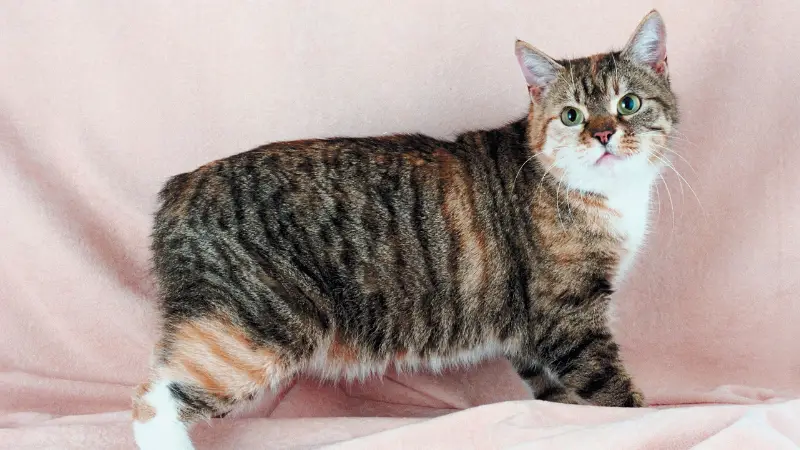

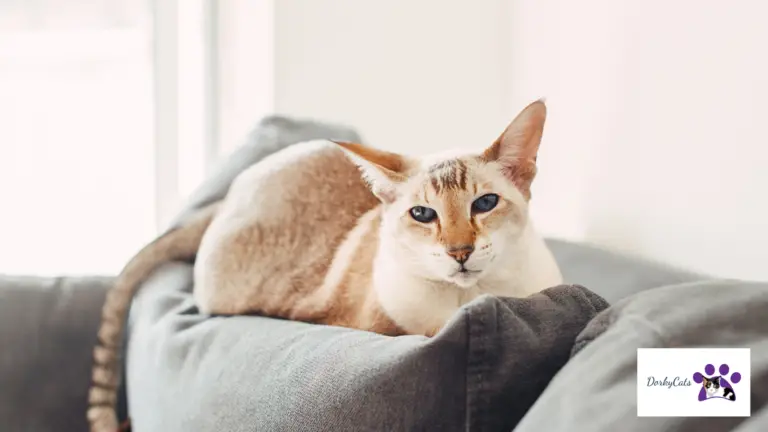
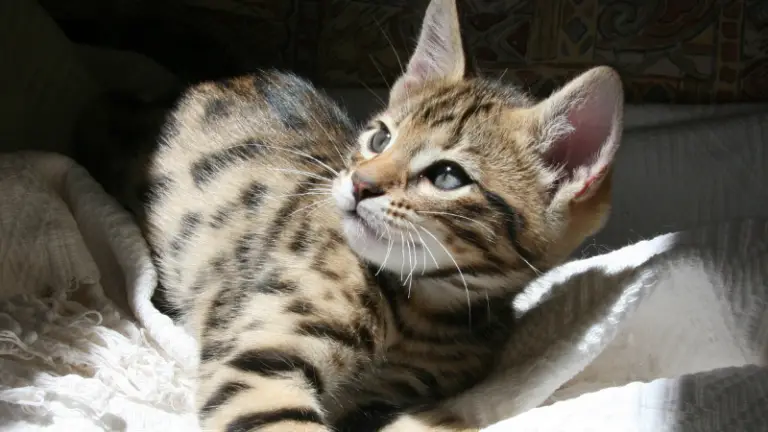
![19+ LAP CAT BREEDS TO LOVE! [AND CUDDLE WITH]](https://dorkycats.com/wp-content/uploads/2023/02/Blogging-Tips-LinkedIn-Post-Header-17-768x432.png)
